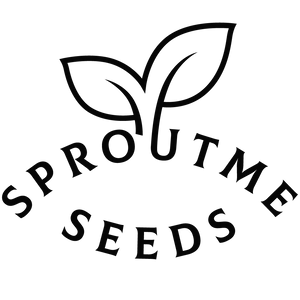Kale Blue Curled
Kale is a highly nutritious leafy green vegetable that belongs to the Brassica family. It's packed with vitamins, minerals, and antioxidants, making it a valuable addition to any diet. Growing kale at home ensures a fresh and healthy supply of this superfood.
Preparing for Growing:
- Selecting a planting location: Choose a sunny spot in your garden with well-drained soil.
- Soil preparation: Amend the soil with organic matter, such as compost or aged manure, to improve fertility and drainage.
- Purchasing or preparing containers/pots: If growing kale in containers, select pots that are at least 8-12 inches deep and have drainage holes.
Starting from Seeds Indoors:
- Seed preparation: No special preparation is needed for kale seeds.
- Choosing suitable pots/containers: Use seed trays or small pots filled with seed starting mix.
- Sowing and caring for seeds indoors: Plant seeds indoors 6-8 weeks before the last frost date. Keep the soil moist and provide adequate light for germination.
- Transplanting to larger containers if necessary: Once seedlings have developed several true leaves, transplant them into larger containers if needed to prevent overcrowding.
Starting from Seeds Outdoors:
- Soil preparation: Loosen the soil to a depth of 6-8 inches and remove any debris or weeds.
- Selecting appropriate timing and method for outdoor sowing: Directly sow kale seeds outdoors in early spring or late summer, depending on your climate.
- Caring for seeds outdoors: Keep the soil consistently moist until seeds germinate, which typically takes 7-14 days.
Growing in Containers/Pots:
- Selecting suitable plants for containers: Choose compact kale varieties that are suitable for container growth.
- Container and soil preparation: Fill containers with a well-draining potting mix that is rich in organic matter.
- Sowing or transplanting plants into containers: Sow seeds or transplant seedlings into containers, planting them at the same depth as they were in their original containers.
- Caring for container plants: Place containers in a sunny location and water regularly to keep the soil evenly moist.
Transplanting to Garden:
- Soil and planting site preparation: Prepare the planting site by incorporating compost or fertilizer into the soil.
- Correct timing and method for transplanting: Transplant seedlings outdoors after the last frost date, spacing them 12-18 inches apart.
- Post-transplant care: Water seedlings deeply after transplanting and mulch around plants to retain soil moisture.
Plant Care:
- Watering: Keep the soil consistently moist, especially during hot weather.
- Fertilizing: Side dress kale plants with compost or a balanced fertilizer every 4-6 weeks.
- Weeding: Keep the area around kale plants weed-free to reduce competition for nutrients.
- Pest and disease management: Monitor plants regularly for pests such as aphids and cabbage worms, and treat any issues promptly.
Harvesting:
- Determining when plants are ready for harvest: Harvest kale leaves when they reach the desired size, typically 8-12 inches long.
- Harvesting and storage guidelines: Cut leaves from the outer portion of the plant, leaving the inner leaves to continue growing. Store harvested kale in the refrigerator for up to a week.
When to Start from Seeds by USDA Plant Hardiness Zones:
- Kale seeds can be started indoors or directly sown outdoors, depending on your USDA plant hardiness zone. In colder climates (zones 1-6), starting seeds indoors 6-8 weeks before the last frost date gives plants a head start on the growing season. In warmer climates (zones 7-11), kale seeds can be sown directly outdoors in early spring or late summer for a fall harvest.
Fast Facts:
- Planting depth: Plant kale seeds 1/4 to 1/2 inch deep in the soil.
- Seed spacing: Sow seeds 1 inch apart in rows spaced 12-18 inches apart.
- Plant spacing: When transplanting seedlings, space them 12-18 inches apart to allow for proper growth.
- Number of seeds per pot/container: Plant 2-3 seeds per pot or container and thin to the strongest seedling once they have germinated.
- Water preferences: Kale prefers consistently moist soil, so water regularly, especially during dry periods.
- Sun preferences: Plant kale in full sun to partial shade, with at least 6 hours of sunlight per day.
- Soil type and other important factors: Kale grows best in well-draining, fertile soil with a pH between 6.0 and 7.5. It can tolerate a wide range of soil types but thrives in rich, loamy soil.
- Companion Planting: Kale grows well with other Brassica crops such as cabbage, broccoli, and cauliflower. It also benefits from companion planting with herbs like dill, mint, and chamomile, which can help deter pests.
- Temperature Preference: Kale is a cool-season crop that thrives in temperatures between 45°F and 75°F. It can tolerate light frosts and may even improve in flavor after exposure to cold temperatures.
- Days to Germination: Kale seeds typically germinate within 5-10 days under optimal conditions.
- Days to Harvest: Depending on the variety, kale can be harvested 50-70 days after planting from seed or 30-50 days after transplanting seedlings.







